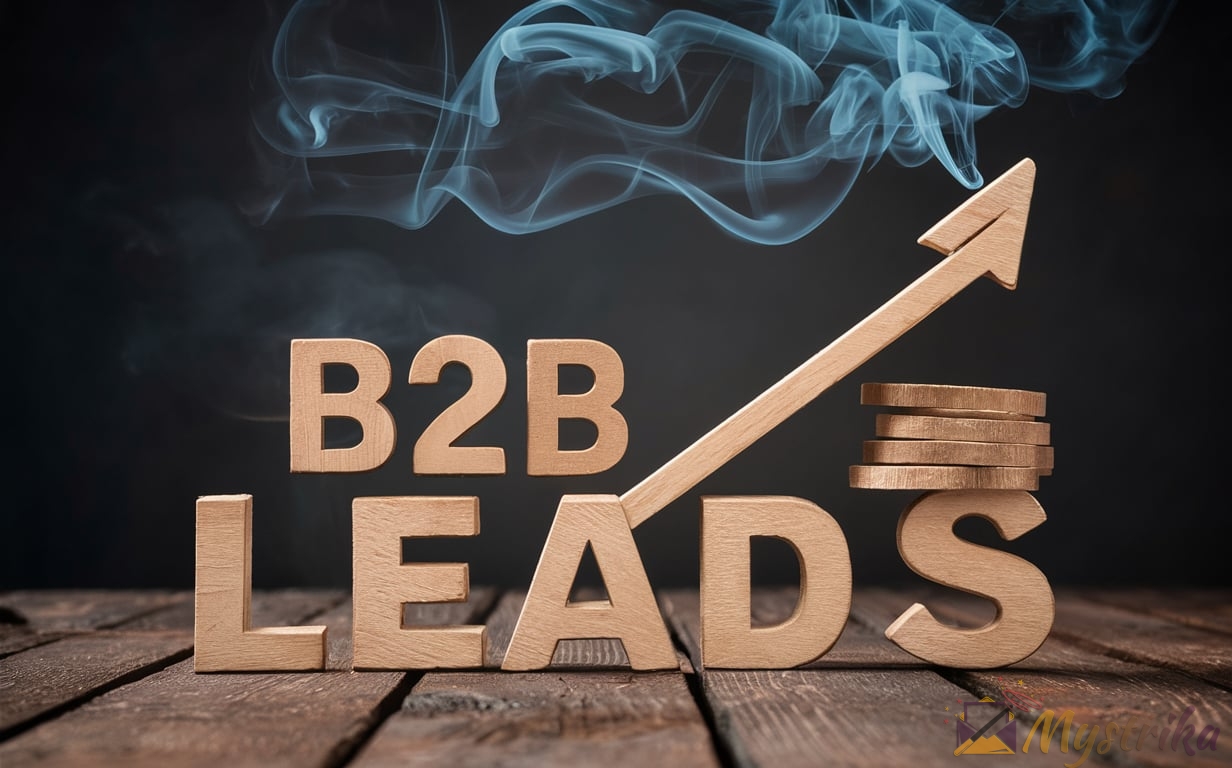Need more leads to hit your growth goals this year? Generating and capturing B2B leads is an art and science. Master both with this comprehensive guide to fill your sales pipeline with your ideal prospects.
Why Lead Generation is Critical for B2B Companies
For any business looking to grow revenues and expand their customer base, lead generation is absolutely essential. Without a steady stream of qualified leads entering the top of the sales funnel, sales teams end up starved for viable prospects to engage and nurture towards a purchase. For B2B companies especially, investing in scalable lead gen strategies needs to be a top priority.
Here’s a closer look at four key reasons effective lead generation is so critical for B2B success:
Scaling Your Business Requires Finding New Customers
At its core, lead generation enables you to methodically find new potential customers that are a good fit for your offerings. This incoming lead flow is the fuel that allows your sales engine to scale. With more leads, your sales team can dedicate their time and energy towards the highest potential opportunities, rather than scrambling to dig up their own prospects.
Too often, B2B companies rely on referrals or inbound inquiries alone to drive new business. But as you look to rapidly grow revenues, you need a proactive approach for identifying and engaging with your total addressable market. This means having a mix of tactics – like content marketing, events, advertising, email outreach, etc. – that expose your brand to a wide pool of prospects within your target customer profile.
For example, a 20-person sales team may only be able to effectively manage meetings and demos with around 100-150 prospects per month. But with a full-funnel lead generation program generating 500+ leads per month, they can strategically focus on vetting and closing the most promising leads first. This amplifies overall productivity and enables far greater scaling than trying to manually find enough new prospects to fill the pipeline.
Lead Gen Fills Your Sales Pipeline So Your Team Has Prospects to Engage
Beyond driving scale, dedicated lead generation efforts provide sales teams with a reliable, steady stream of prospects to connect with. Rather than reps having to spend their limited time trying to source their own leads through cold calls and emails, your marketing and sales development efforts fill the top of the pipeline so reps can focus on selling.
With lead generation, you know that each month or quarter your funnel will receive enough promising, sales-ready leads to hit revenue targets. This visibility and predictability is invaluable. For example, software companies can confidently invest in growing their sales organization because they know their lead gen program can deliver sufficient opportunity volume.
When your sales team doesn’t need to constantly scramble to dig for prospects, they can be far more selective in only engaging with leads that show real potential. This increases efficiency and win rates. Reps also have more time for critical selling activities like demos, proposals, and closing deals rather than spending the bulk of their day making cold calls that rarely convert.
Helps You Identify Potential Buyers and Decision-Makers at Target Companies
One of the hardest parts of B2B sales is actually identifying and connecting with the right decision-makers. Lead generation provides that missing link.
With tactics like pay-per-click advertising, you can target individuals searching for specific solutions relating to your product. Or by sponsoring industry events and trade-shows, you get face time with potential prospects from your ideal customer profile.
Direct email campaigns allow you to introduce your brand by name to VP-level titles in your target market. And with modern sales intelligence tools, you can build targeted contact lists of key buyer personas at companies that fit your ideal customer criteria.
This ability to systematically identify and reach the hidden prospects that are likely to have a need for your product – but whom your sales team would never uncover on their own – is incredibly powerful. It allows you to uncover new opportunities and revenue sources that would otherwise be invisible.
Allows You to Nurture Relationships Over Time Through Content and Outreach
Trying to close a complex, enterprise B2B sale in a single call or meeting is a fantasy for most businesses. In reality, purchasers need to be nurtured through an extended evaluation and decision process.
Lead generation gives you the mechanism to make your company visible to potential buyers early in their journey, and continue engaging over the long-term. For example, someone may first become aware of you by downloading a targeted whitepaper from your website.
Over the following months and years, they receive your email newsletter with helpful industry insights. They come to recognize your brand from regularly engaging on social media. And eventually when a need arises that your product can solve, they have you top of mind because of this nurtured relationship.
Absent early lead generation to get on buyers’ radars, you end up using a reactive sales model purely dependent on prospects reaching out once they have a clearly defined need. But at that point, you’re likely already behind other vendors who have been nurturing the relationship over the long-term. With lead gen, you can warm up prospects far earlier and be the first one they call when they’re ready to buy.
The benefits of prioritizing lead generation for long-term B2B success are undeniable. These strategies provide a force multiplier effect on your sales and marketing efforts. But executing an effective lead gen program does require cross-team coordination and commitment. Make sure sales, marketing and company leadership are aligned on goals, process, and accountability. With sufficient investment and buy-in, your lead pipeline will start overflowing with lucrative new opportunities in no time.
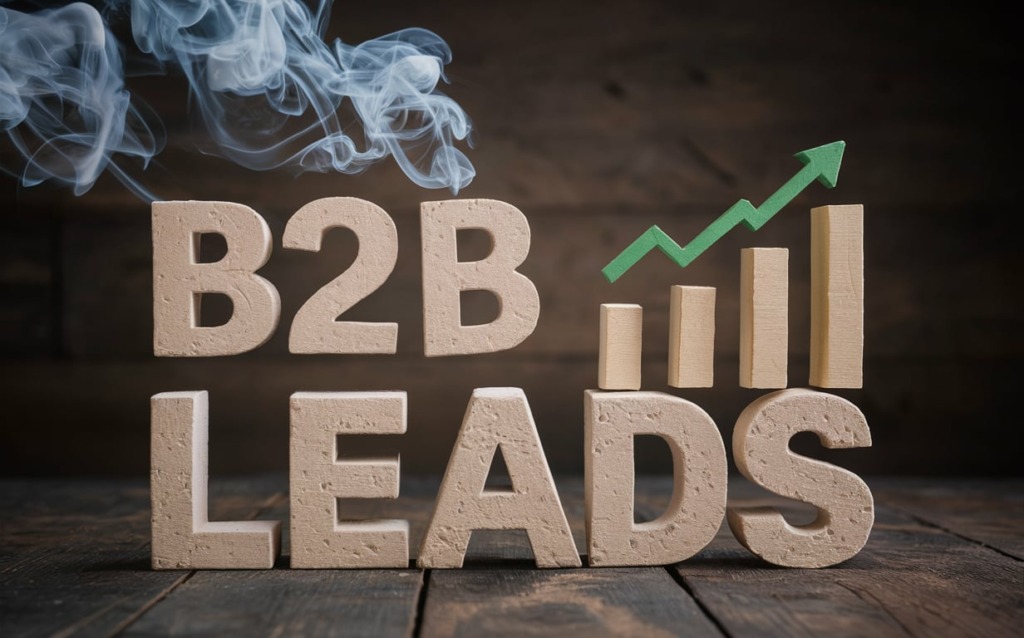
Defining Different Types of B2B Leads
Not all leads are created equal. As a B2B company, it’s critical to understand the different categories of leads you’ll encounter and what makes them qualified – or not – to enter your sales pipeline. Having defined lead types and qualification criteria will optimize your sales process and prevent wasted effort on prospects that aren’t ready.
The two main classes of leads are known as marketing qualified leads (MQLs) and sales qualified leads (SQLs). Let’s explore how they differ.
Marketing Qualified Leads (MQLs)
Marketing qualified leads represent the first stage of a B2B prospect indicating interest in your company or products. As the name suggests, these leads are sourced or nurtured through various marketing activities like content, events, advertising, etc.
Some common characteristics of MQLs include:
- They come from your target demographic and match your ideal customer profile
- They have provided some basic contact details by downloading an asset or filling out a form
- They have only had light touch engagement like email or social media outreach
- There is no indication yet if budget and authority to buy exists
MQLs signal potential interest in your offerings but are not yet sales ready. Typically, they will need to be nurtured further by marketing with educational content and messaging. The goal is to build awareness and affinity, introducing them to your brand and value proposition.
For example, someone that downloads your definitive guide to CPQ software from your website would count as an MQL. Your sales team does not need to urgently contact them since more nurturing is required first. But you now have that lead’s email on file to continue the conversation over time.
Your marketing automation workflows and CRM system will track MQLs by source and attributes, allowing you to identify trends and optimize your lead gen strategy. After sufficient nurturing, a portion of MQLs will naturally graduate to becoming sales ready leads.
Sales Qualified Leads (SQLs)
Once a prospect exhibits clear signs of readiness to engage with sales, they become a sales qualified, or sales ready, lead. These SQLs are handed off for follow up about purchasing.
Typical indicators of an SQL include:
- Directly contacting your sales team via phone, email, chat, etc.
- Filling out a form requesting a demo or free trial
- Downloading pricing documents or other bottom-funnel content
- Attending a discovery call or physical sales meeting
- Having the budget authority to make a purchasing decision
- Clearly articulating a business need that your product solves
SQLs represent prime prospects who have indicated definite interest and an intent to buy. They are already familiar with your brand and what you offer. Now they need engagement from sales to finalize the purchasing process.
It is crucial that sales teams prioritize following up rapidly with SQLs while their interest level remains high. These hot leads demand urgent attention and quick qualification calls to determine budget, stakeholders, timeline, and technical requirements. SQLs require much less general education about your solution since they have already sought you out.
The handoff between marketing and sales of an SQL needs to be frictionless. Leads should automatically get routed based on criteria like their score, source, and other attributes. Sales reps receive instant notifications to pursue SQLs while the trail is still fresh. With immediate follow up, your chances of converting these predisposed prospects into customers is remarkably higher.
Comparing MQLs vs SQLs
While MQLs and SQLs represent different sides of the lead generation coin, they work in tandem to drive pipeline growth and revenue. Here’s a helpful comparison:
| Aspect | Marketing Qualified (MQL) | Sales Qualified (SQL) |
|---|---|---|
| Definition | Shows interest through content consumption, email engagement, etc. | Directly contacts sales asking for demos, trials, pricing, meetings |
| Stage | Early/Middle of Funnel | Lower Funnel, Nearly Sales Ready |
| Lead Source | Inbound tactics like content, events, referrals | Marketing nurtured MQLs or Direct Inbound |
| Follow Up | Continue nurturing through marketing | Immediate sales call and engagement |
| Timeframe | Longer sales cycle, more education needed | Short sales cycle since already identified need |
| Metrics | Volume, cost per lead, nurture rates | Sales acceptance rate, deal velocity, win rates |
The takeaway is that both MQLs and SQLs are integral to your lead generation strategy and achieving revenue growth. You need consistent top-of-funnel interest and lower-funnel sales opportunities. Finding the right balance between marketing and sales-driven tactics is crucial to create a predictable pipeline of leads at different buying stages.
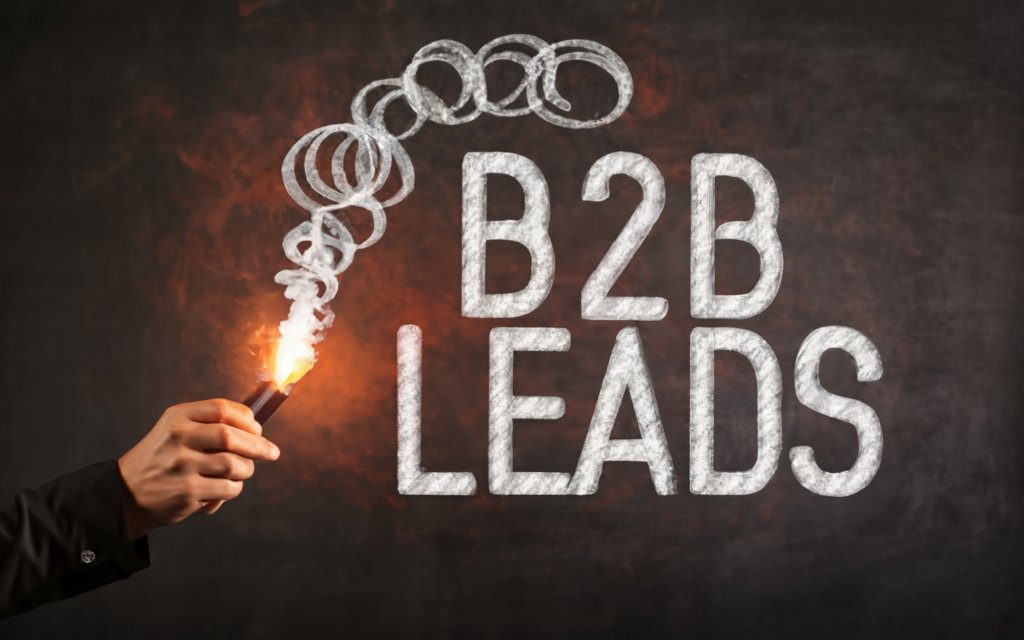
Core Strategies for Generating Quality B2B Leads
When it comes to driving new business opportunities, B2B organizations need to leverage both inbound and outbound tactics. This balanced approach allows you to cast a wide net for capturing leads across multiple touchpoints. Let’s explore some of the most effective tactics for generating quality leads.
Inbound Lead Generation Tactics
Inbound lead generation centers around creating valuable content, experiences and resources that pull potential buyers toward your brand. Tactics like SEO, social media and lead magnets make you discoverable to prospects researching solutions online.
Content Marketing
Content marketing entails consistently publishing new educational articles, ebooks, whitepapers, videos, case studies and other assets. This content should target the pains, challenges and goals of your ideal buyers.
Optimizing this content for keywords will allow you to rank highly in organic search. As prospects find and consume your content, they will opt-in to receive further communications like email nurturing. Make calls-to-action, offers and lead gen forms prominent throughout your content.
For example, an accounting software company could create a new ebook each month tackling common pain points for CPAs and bookkeepers. Gate access to the ebook by collecting the reader’s contact details.
Social Media Marketing
Build an engaged following on platforms like LinkedIn, Twitter and Facebook by sharing your content, joining conversations and promoting your brand. Focus on professional communities relevant to your target customers.
Social allows you to organically interact with prospects, demonstrate expertise and nudge them down the funnel. Retargeting ads help expand your reach to lookalike audiences. For example, an IT services firm can nurture leads by responding to CIOs’ questions in LinkedIn Groups.
Landing Pages and Lead Magnets
Create dedicated landing pages that offer lead magnets like free trials, assessments, calculators and guides in exchange for capturing contact info. Promote these lead capture pages through pay-per-click ads, email, social media and other channels.
The key is enticing prospects with something compelling that speaks to their needs. For example, a HR software company could offer a tool to benchmark compensation packages as a lead magnet.
Outbound Lead Generation Tactics
Outbound strategies take a targeted, proactive approach to directly engaging prospects before they come to you. Tactics like cold emailing and events help you get on prospects’ radars.
Email Outreach
Using sales intelligence tools to build targeted contact lists, you can craft personalized emails pitching your solution to specific prospects. Take a consultative approach focused on their needs. Automate nurture streams to build mindshare.
Lead with value rather than pure promotions. For example, a merchant services provider can email local retailers tips for increasing average order value before encouraging them to request a quote.
Telemarketing and Lead List Building
Telemarketing remains one of the most direct ways to speak with prospects and qualify interest. While seen as old-school, cold calling works for efficiently contacting high volumes of potential buyers.
Lead list building using firmographic and technographic data allows you to target specific titles and segments within your total addressable market. Consider outsourcing telemarketing to specialized B2B appointment setting agencies.
Paid Advertising
Paid ads allow you to get your message in front of new audiences at scale. You can target by job title, company, industry, keywords and interests. For example, sponsored posts on LinkedIn and Facebook help expand reach. Retargeting warms up visitors who previously engaged. Pay-per-click ads drive traffic to targeted landing pages.
With both inbound and outbound strategies covered, you can take an integrated approach to systematically driving new opportunities across the entire sales funnel. The key is balancing broad awareness and targeted outreach.

Key Elements for Optimizing Your Lead Gen Process
Generating a high volume of leads is just the starting point. To transform those leads into revenue, you need a well-oiled machine across marketing, sales and operations. Let’s explore some core elements for optimizing lead management and improving conversions.
Clear Buyer Personas and Target Account Lists
The foundation of efficient lead generation is knowing exactly who your ideal customers are. Develop detailed buyer personas that capture your best-fit prospects’ attributes including:
- Firmographic data like company size, industry, location
- Demographic details like job title, seniority, age range
- Psychographic factors like personality, values, interests
- Goals and challenges they face
- Role in the buying process
These fictional personas represent your dream customers. They ensure you take a tailored approach in all messaging and outreach.
You can further increase relevancy by creating target account lists of companies that closely match your personas and have a high likelihood of needing your solution. Ideal firmographic criteria often include:
- Industry/sub-industry
- Revenue size
- Number of employees
- Technology stack
- Recent funding events
- Website traffic and keywords
- Social media followers
Sales intelligence tools like DiscoverOrg](https://discoverorg.com/) and [ZoomInfo can help you build hyper-targeted lists of prospects to prioritize.
Multi-Channel Attribution Tracking
To optimize marketing spend, you need visibility into which tactics are delivering results. Multi-channel attribution provides this invaluable data on lead sources.
Marketing automation and CRM tools like HubSpot](https://www.hubspot.com/products/marketing) and [Salesforce make it easy to track leads back to the original channel where they first engaged:
- Organic traffic source
- Paid ad campaign
- Referring URL
- Form submission page
- Event registration
- Webinar sign-up
- Email click-through
- Social post clicked
- etc.
This reporting allows you to double down on high-performing channels and pare back ineffective ones. Over time, you can perfect an attribution model that reflects the customer journey and credits each interaction accordingly along the path to conversion.
Lead Scoring and Sales Readiness
Not all leads are equal. Lead scoring helps you gauge the sales potential of each inbound prospect based on attributes like:
- Firmographic data
- Job title and seniority
- Engagement activity
- List source
- Interactions to date
- Content consumed
Higher scored leads are automatically routed for sales follow-up first. When agents have a finite amount of time, only pursuing the most promising leads ensures efficiency.
You can further prioritize by only passing along sales ready leads according to qualification criteria like:
- Matching an ideal customer profile
- Visiting pricing or contact sales pages
- Downloading case studies
- Attending a webinar
- Clicking emails focusing on ROI or trials
- Calling sales line with questions
This helps avoid wasting sales time on unqualified leads before proper nurturing.
CRM and Marketing Automation
To coordinate handoffs and communications at scale, your lead gen tech stack needs to seamlessly share data. A marketing automation platform like Marketo](https://www.marketo.com/) or [Pardot handles segmentation, scoring, nurturing and routing.
A CRM like Salesforce](https://www.salesforce.com/) or [HubSpot gives sales visibility into prospects with built-in workflows to update status and activity.
Integrating these systems provides a single source of truth. Sales knows which leads marketing is nurturing and can access campaign analytics. Marketing sees lead activity within the CRM to optimize programs. This level of visibility ensures alignment.
Service-Level Agreements (SLAs)
To turn leads into customers, sales needs to respond quickly when prospects are ready to engage. Slow follow-up times result in missed opportunities and stale leads.
Marketing and Sales should agree on SLA timeframes for calls, emails and meetings at each stage of the funnel. For example:
- MQLs get email response within 3 days of inquiry
- SQLs get a call within 1 business day
- Discovery calls booked within 3 days
- Meeting follow-ups within 2 days
These SLAs hold both teams accountable. Marketing agrees to only pass along truly sales-ready leads. In turn, sales commits to rapid response and updating lead records. This closed-loop process keeps prospects from slipping through the cracks.
With these foundational elements in place – personas, analytics, workflows, SLAs and technology integrations – you can transform even modest lead volume into a smooth-running engine for sales growth. As prospects move down the funnel, key handoffs are executed reliably and efficiently.
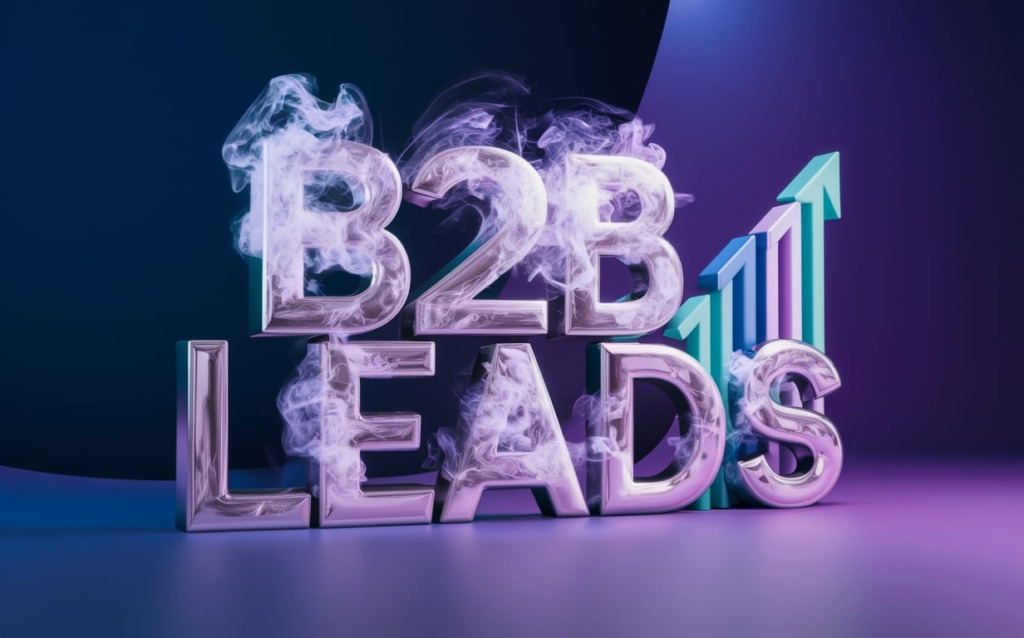
Measuring the Impact and ROI of Lead Gen
To determine if your investments in lead generation are paying off, you need to monitor quantifiable results. By tracking key metrics around volume, pipeline movement, revenue, and ROI, you can optimize your strategy for maximum profitability.
Volume and Quality of Leads
At the highest level, look at the raw number and quality of leads generated over time. Plot monthly trends to spot positive or negative momentum across initiatives like:
- New visitors to your website
- Content downloads and gated offer conversions
- Email list sign-ups
- Event and webinar registrations
- Inbound inquiries and chat conversations
Also analyze the inbound mix by lead source to identify your top performing channels. Survey leads on how they discovered you and continue A/B testing for improvements.
Drill down further to quantify where leads are dropping out of your funnel using cohort analysis. For example, if 100 prospects download a whitepaper in month one:
- 75 open follow-up email #1
- 50 click email #2
- 25 schedule a demo
- 10 become SQLs
- 5 close deals
This waterfall view exposes friction points where leads are disengaging. It also helps forecast volume and velocity through each funnel stage.
Marketing Originated Customer Revenue
The clearest measure of lead gen ROI is tracking revenue from customers originally converted by marketing programs.
Your CRM and marketing automation solutions make this straightforward by tagging each new lead with its creation source. Over time, you can attribute every closed deal back to the campaign, content offer, or channel that first brought them in.
Analyze revenue by source to direct future budget to what’s working best. For example, you may find:
- Webinars generate 20% of leads but drive 40% of revenue
- Paid search produces 30% of leads but just 10% of revenue
- Referrals are only 15% of volume but account for 35% of revenue
These insights allow you to double down on highly profitable lead sources and pare back less fruitful ones.
Sales Cycle Length
The time it takes prospects to progress from initial contact to closed sale is a telling indicator of lead quality and sales effectiveness.
If your average sales cycle stretches 6+ months, it likely signals problems qualifying and nurturing leads upfront. Lengthy sales cycles also limit growth potential.
Look at trends in average and median time from lead creation to close. Break it down by source, campaign, product line and other attributes.
Optimizing your sales methodology, SLAs, and handoff process to accelerate sales cycle length allows your team to convert more leads in less time for faster growth.
Lead to Customer Conversion Rates
The final metric for gauging lead gen success is your conversion rate at each funnel stage. For example:
- Lead to MQL conversion rate
- MQL to sales accepted conversion rate
- Sales accepted to won deal conversion rate
Crunching these percentages allows you to quantify the number of prospects needed at the top to achieve revenue targets. If you lose 90% of inbound leads before MQL stage, that’s insight to improve qualification.
Similarly, if just 10% of SQLs become won deals, better sales nurturing is needed. These conversion benchmarks help you put required lead volumes in perspective.
By diligently monitoring these conversion rates over time, you can spot positive or negative trends and react accordingly. If conversions rise, gear up lead gen to fuel faster growth. If rates decline, address areas losing steam.
In summary, taking a data-driven approach is mandatory to continually optimize B2B lead generation and accelerate growth. Tie spending directly to pipeline impact and revenue to make smart investment decisions.
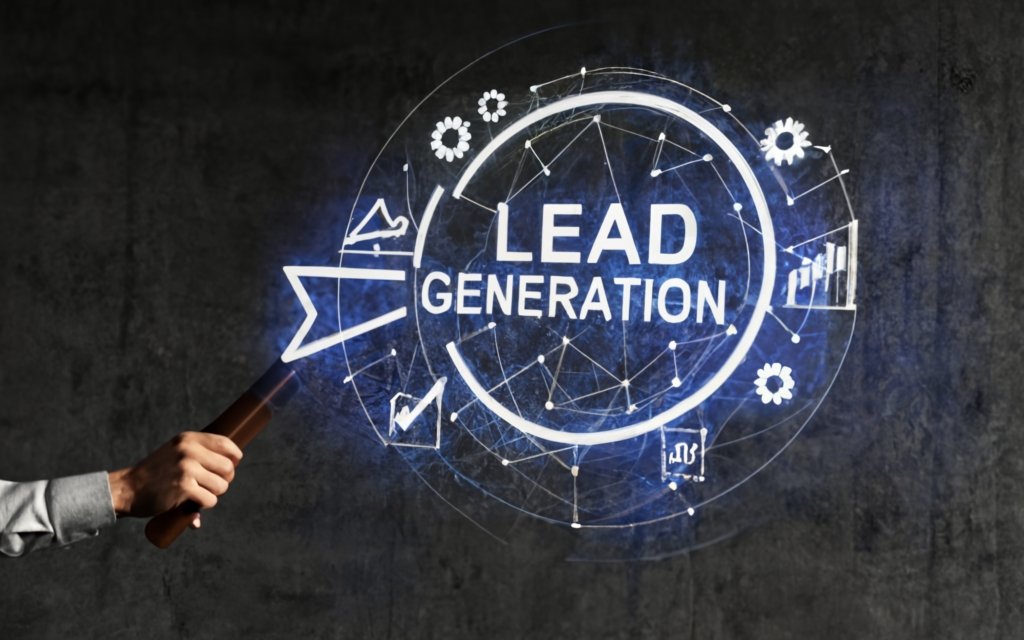
Maintaining Compliance and Ethics with B2B Lead Gen
As eager as you may be to scale up lead generation, it’s critical to do so in an ethical, compliant manner. Neglecting data privacy, unsubscribe requests and transparency can destroy trust with prospects and get you blacklisted. Here are some best practices to follow.
Respecting Contact Preferences
At the end of the day, lead generation is about establishing mutually beneficial relationships between your brand and potential customers. It should never feel invasive or unwanted. As such, you must honor prospect contact preferences.
If someone unsubscribes, opts-out of communications or requests removal, immediately comply. Similarly, if an email bounces or is invalid, remove it from your lists. Manual list “scrubbing” and automated hygiene protocols like those in Mailchimp help.
Suppress any contacts who mentioned they already have a solution or are not interested from future outreach. Avoid spamming prospects who did not explicitly opt-in or provide their contact details voluntarily.
This respect for contacts’ wishes helps you maintain a positive brand reputation as an ethical B2B marketer. While it may limit your short-term lead pipeline, you cultivate loyalty and trust.
Transparent Communication
Transparency builds credibility. That means informing prospects upfront who you are, where you got their contact information, and what to expect.
Including your company name, mailing address and an unsubscribe link in every email is mandatory. Don’t disguise your identity to try gaining false mindshare.
When using third-party contact data, cite your source by name. Prospects dislike learning their details were “obtained” or “rented” without more specifics.
Set proper opt-in expectations by explaining future communications new leads will receive and how often. Surprising subscribers erodes trust.
This upfront transparency helps prospects feel in control. They gain confidence engaging with a brand that walks the ethical line versus worrying about spam.
Securing Lead Data Responsibly
prospect contact details, behavior, interests and other data are the lifeblood of your B2B lead generation efforts. Failing to handle this data securely can lead to disastrous compliance violations and loss of trust.
Your organization should implement robust data security protections including:
- Encrypting stored prospect data
- Anonymizing records by removing personally identifiable information
- Limiting employee access to sensitive data
- Using secure protocols like HTTPS everywhere
- Partnering only with vendors that are contractually bound to data privacy measures
- Promptly reporting any potential breaches or unauthorized access
Additionally, make sure your databases and CRM systems comply with regulations like GDPR and CCPA for any EU or California contacts. Appointing a Data Protection Officer demonstrates your commitment to compliance.
While tedious, these precautions are mandatory in the modern regulatory landscape. They protect your brand’s reputation and minimize risk of fines or lawsuits. By handling data properly, you reassure prospects and build loyalty.
In summary, B2B lead generation must balance performance with principles. Avoid treating prospects as faceless metrics and instead establish relationships rooted in respect and transparency. Your contacts will reward you with engagement, referrals and purchases. Doing things the right way takes patience, but pays off exponentially.
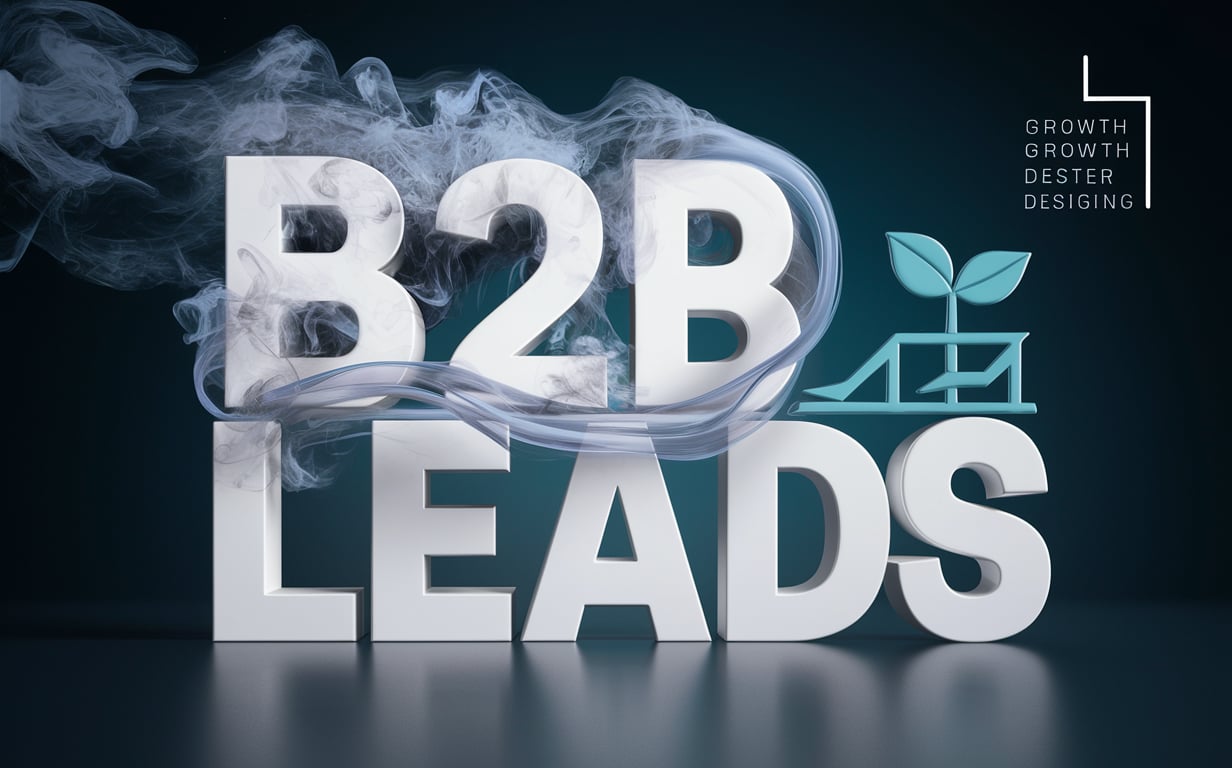
Key Takeaways
Generating a steady stream of quality leads is the lifeblood of any B2B company looking to grow. An effective lead generation strategy requires bringing together inbound and outbound tactics across sales, marketing and operations.
Some core principles to remember include:
- Lead generation fills your sales pipeline so reps have viable prospects to nurture and close. Without new leads, growth stalls.
- Focus your efforts on clearly defined target buyer personas across titles, seniority levels, company sizes and industries.
- Use both inbound tactics like SEO, social and content alongside outbound efforts like email outreach and events for balance.
- Continually track multi-channel attribution to identify your best lead sources and optimize spending.
- Implement workflows and SLAs for fast, efficient lead handoffs between marketing and sales.
- Take a data-driven approach to rate leads, identify drop-offs and improve conversions across the funnel.
- Maintain compliance and build trust by honoring contact preferences, communicating transparently and securing data.
With the right strategies and commitment, your B2B lead generation efforts will shift into high gear. Consistent new opportunities turn into pipeline velocity, closed deals and ultimately revenue growth. Use these best practices as your playbook for acquisition success.
Frequently Asked Questions
Q: What are the most effective lead generation strategies for B2B companies?
A: A balanced mix of inbound (content, SEO, social) and outbound (email, events, ads) works best. Buyer personas, multi-channel attribution and workflow automation are key to optimizing results.
Q: How can I track the ROI of my lead generation efforts?
A: Analyze metrics like volume by source, sales cycle length, marketing originated revenue and funnel conversion rates. Tie spending directly to pipeline and revenue growth.
Q: What tools do I need for B2B lead generation and management?
A: A CRM like Salesforce combined with marketing automation like HubSpot or Marketo provides the workflows and integration needed. Sales intelligence and contact data tools also help.
Q: What are signs that my sales and marketing teams aren’t aligned on leads?
A: Symptoms include inconsistent follow-up times, unqualified leads in the pipeline, closed-loop reporting issues andfinger pointing between departments.
Q: How can I improve the conversion rate of my leads into sales?
A: Ensure you are targeting the right personas. Use lead scoring and tight SLAs to route hot leads quickly. Nurture leads with relevant content. Refine your sales skills and process.
Q: Should I focus on acquiring more leads or improving conversion rates first?
A: Do both in parallel. More leads and higher conversion rates multiply results. But quality over quantity is preferable if forced to choose one area.
Q: What details make a B2B lead “qualified” vs. unqualified?
A: Clear indicators like matching ideal firmographics, requesting a demo, completing a needs assessment survey or calling about pricing signal sales readiness.
Q: Is lead generation or nurturing more important?
A: They go hand in hand. Lead gen fills the top of the funnel while nurturing progresses prospects closer to a purchase. Strength in both areas is needed.

